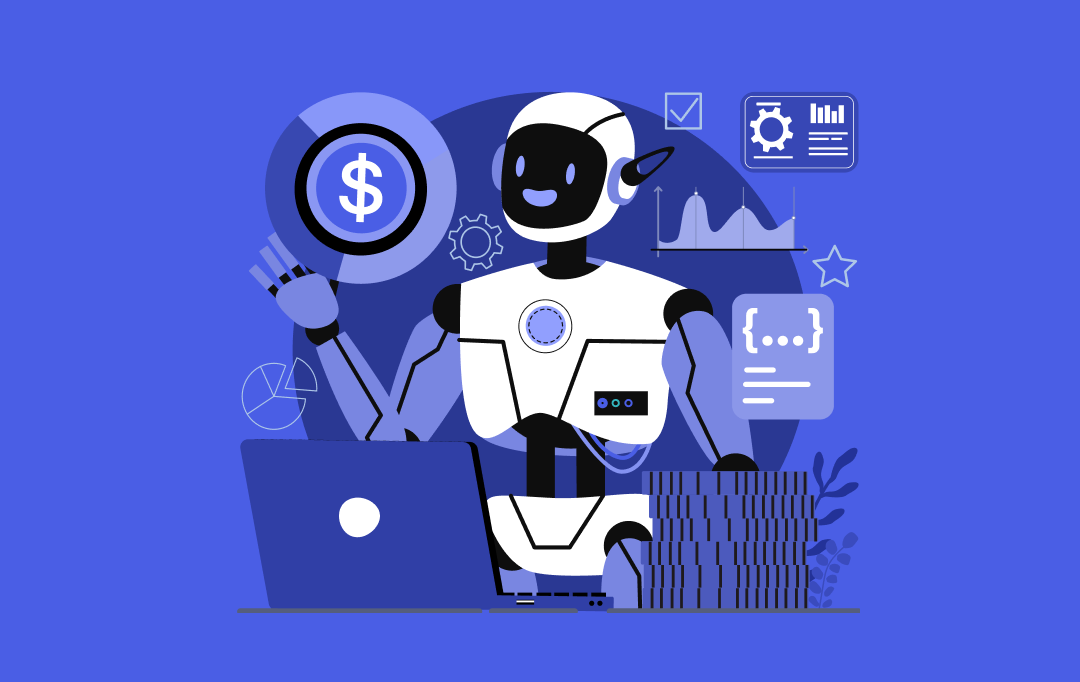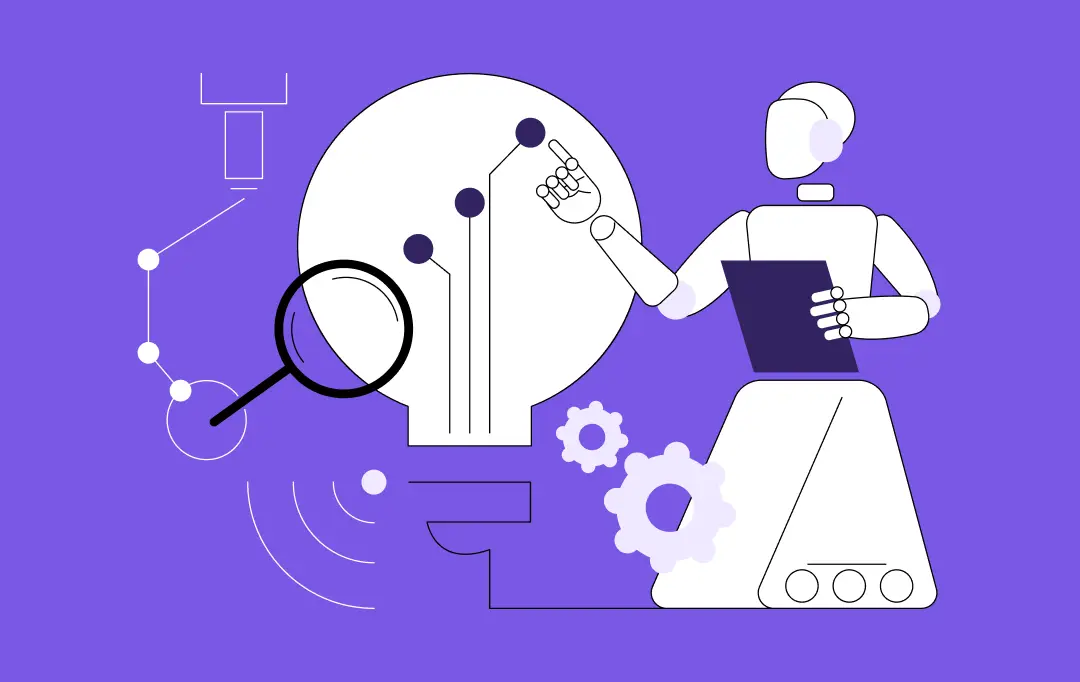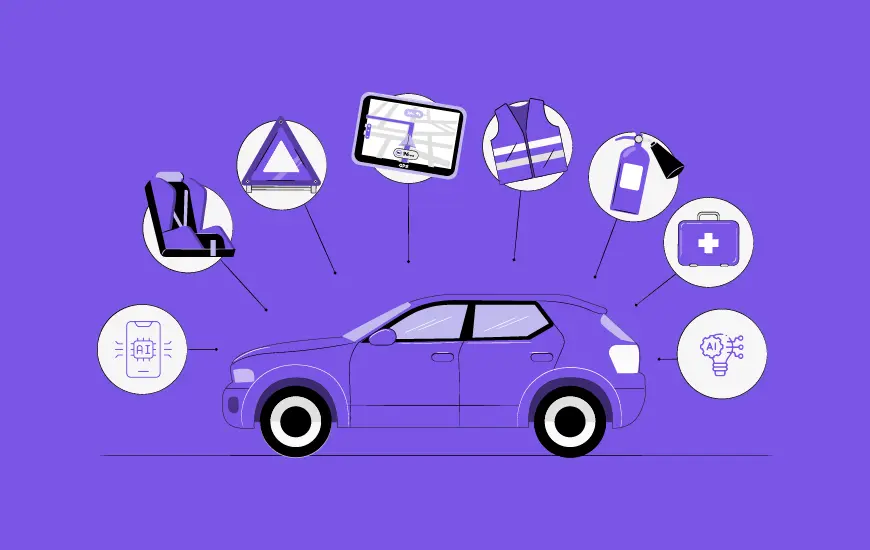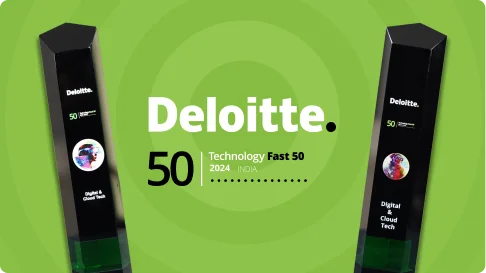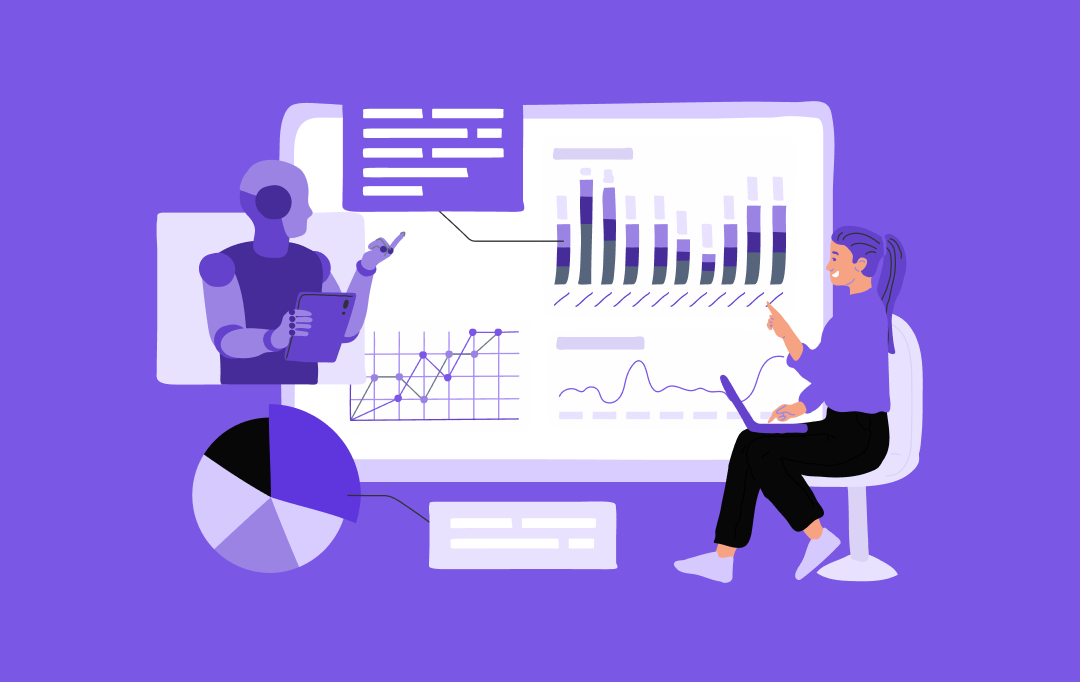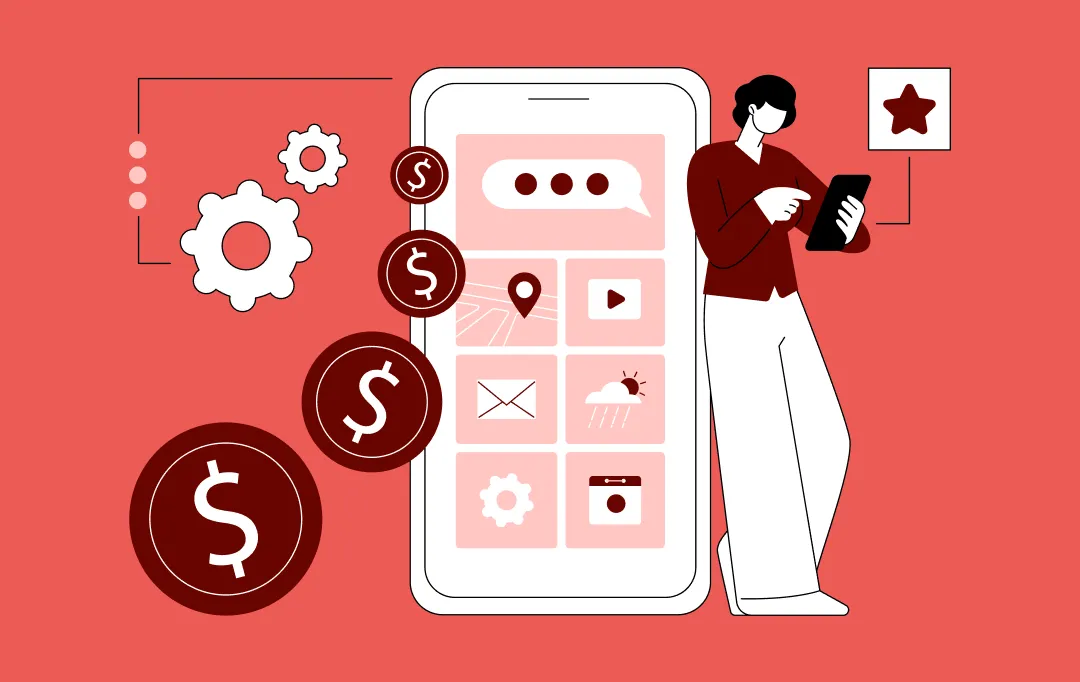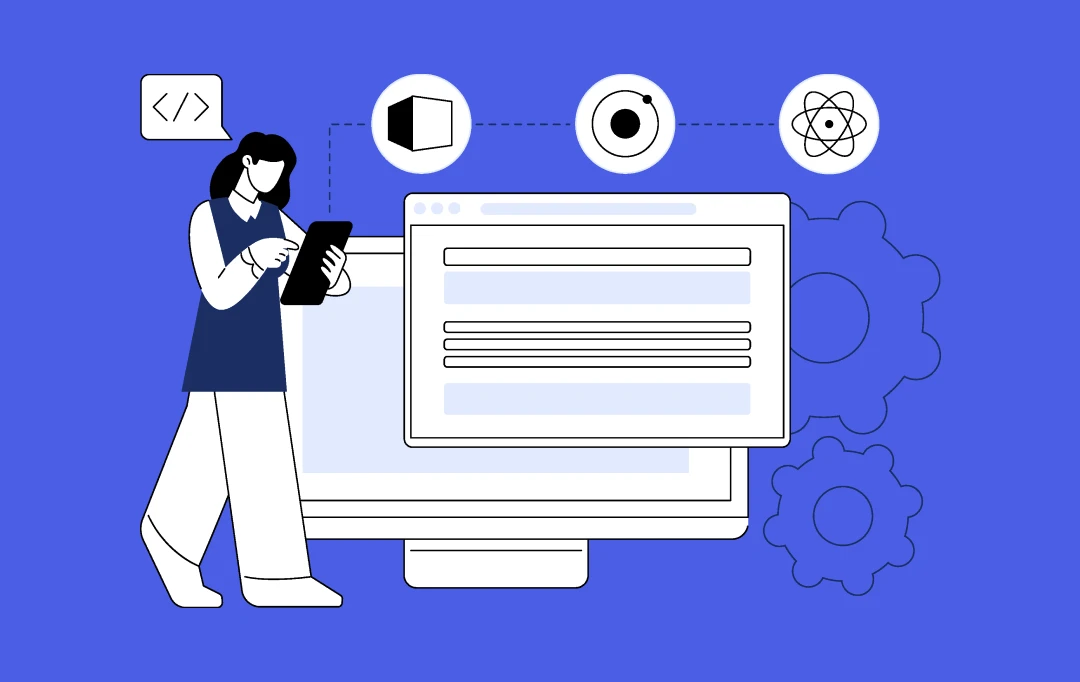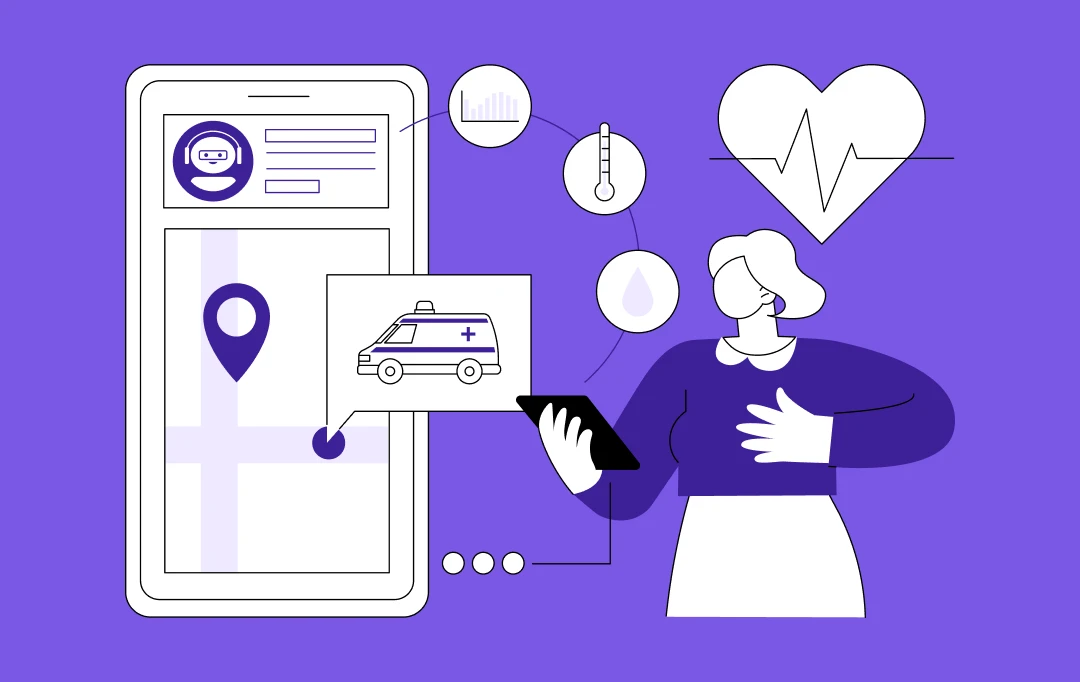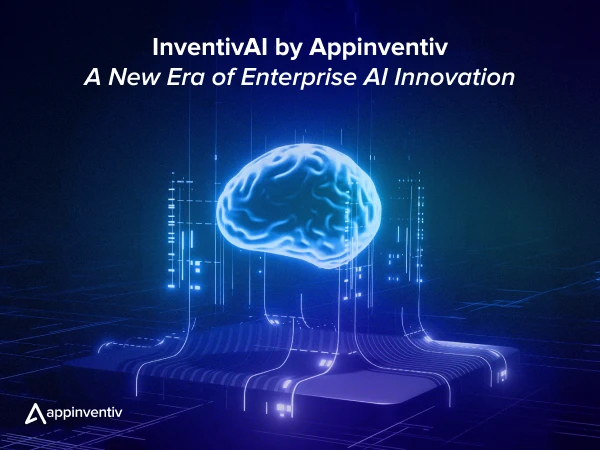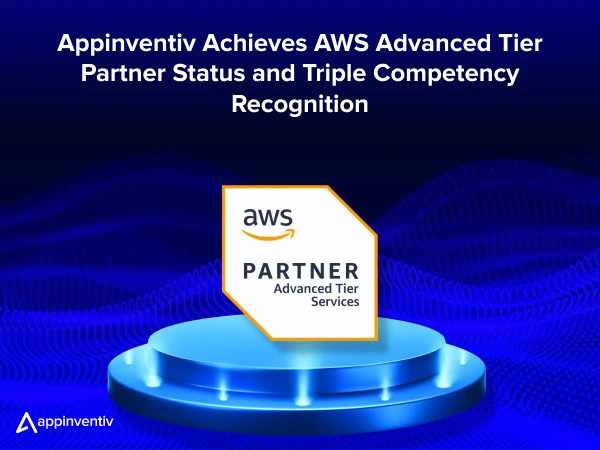- Understanding the Types of Software for Medical Devices
- Software as a Medical Device (SaMD)
- Software in a Medical Device (SiMD)
- Software used in the manufacture or maintenance of medical devices
- Software as A Medical Device: Deciphering Enhanced Healthcare
- How Do You Know If Your Mobile App is a SaMD?
- Factors to Consider for SaMD Characterization
- Exploring the Examples of Software As a Medical Device
- Category Wise Examples of SaMD
- Category IV:
- Category III:
- Category II:
- Category I:
- How Do You Classify Software As A Medical Device?
- How Can Manufacturers Comply with SaMD Regulations?
- Exploring the Benefits of Software as a Medical Device
- Benefits for Patients
- Benefits for Clinicians
- Benefits for Healthcare Systems
- Navigating SaMD Development: Processes, Compliance, and Best Practices
- Postmarket Requirements for SaMD
- How Do You Ensure the Safety and Security of SaMD?
- Regulatory Compliance
- Data Encryption and Secure Transmission
- Rigorous Testing
- Access Control and Authentication
- Cybersecurity Protocols
- Regular Software Updates
- Privacy Standards
- Collaboration with Cybersecurity Experts
- Future of Software as a Medical Device: Understanding the Trends and Innovations
- Artificial Intelligence Integration
- Telemedicine Expansion
- Wearable Device Advancements
- Blockchain for Data Security
- Real-Time Data Analytics
- How Can Appinventiv Help You With Healthcare Software Development?
- FAQs
Over the last four decades, technological innovations in and around medical devices have increased dramatically. The past few years have witnessed an acceleration in the sector, thanks to the Internet of Things and the rise of its other corresponding parts like wireless connectivity, cloud computing, AI, etc. These advancements have transformed the healthcare processes and are continuously causing a seismic shift in the process of healthcare administration and delivery.
And now, mobile applications have also seeped in and have become an important part of these highly demanded, technology-based medical and non-medical purposes. These applications, recognized as Software as a Medical Device (SaMD), have evolved to play a crucial role in our lives. SaMD applications extend beyond diagnosis and include monitoring and treatment, marking a smooth transition from Healthcare 1.0 to Healthcare 3.0.
Seeing the growing inclusion of SaMD in everyday healthcare, the International Medical Device Regulators Forum (IMDRF), of which the US FDA is a member, has described the concept and SaMD risk-based categories in detail for the medical app development industry to follow. The FDA’s development of SaMD-related policies emphasizes risk-based approaches, enhancing communication requirements and aligning regulatory strategies with the dynamic nature of digital devices.
In this article, we are going to throw some light on SaMD, Software as a medical device regulation, mHealth app types, and other types of medical Software that are categorized as Software as a Medical Device.
Understanding the Types of Software for Medical Devices
Software for medical devices can be classified into three main types:
Software as a Medical Device (SaMD)
SaMD is software that is intended to be used for a medical purpose, either alone or in conjunction with a medical device. SaMD can be used to diagnose, treat, monitor, or prevent diseases and conditions. For example, a software that uses artificial intelligence (AI) to analyze medical images and detect cancer or other diseases is a SaMD.
Software in a Medical Device (SiMD)
SiMD is one of the notable types of software for medical devices that is embedded in a medical device and is essential for the device to function safely and effectively. SiMD controls the device’s hardware and performs other critical functions. For example, software that controls the flow of insulin in an insulin pump is software in a medical device.
Software used in the manufacture or maintenance of medical devices
This type of software is used to design, develop, manufacture, or maintain medical devices. It is not intended to be used directly by patients or healthcare providers. For instance, software used to design medical devices using computer-aided design (CAD) is an example of software used in the manufacture or maintenance of medical devices.
Software as A Medical Device: Deciphering Enhanced Healthcare

The terminology – Software as a Medical Device stands for any software that is intended for use for one or multiple medical purposes and which performs these purposes without being integrated into a hardware medical device.

Simply put, SaMD operates as a standalone entity and plays a critical role in various healthcare processes. This specialized Software plays a vital role in multiple healthcare processes, covering an extensive list of functions. It provides diagnostic, therapeutic, and monitoring services, which are essential for medical professionals to enhance patient care and clinical decision-making. Furthermore, its adaptability and ability to perform multiple healthcare functions make it an invaluable asset in modern medical practices.
Regulatory bodies such as the IMDRF and FDA have implemented strict guidelines and policies for the development and implementation of SaMD in healthcare. These measures ensure adherence to high standards of quality, safety, and efficacy.
The Software as a Medical Device market size is expected to reach $8.2 billion by 2027, witnessing a CAGR of 11% from 2021 to 2027. The growing market size can be further accredited to the rapidly advancing technology landscape, increased adoption of connected health devices, and a surge in demand for remote patient monitoring solutions.
Thus now is the right time for enterprises to leverage this promising landscape to expand their offerings and capitalize on the rapidly growing SaMD market
How Do You Know If Your Mobile App is a SaMD?
The most obvious way to label a mobile app as a SaMD is by assessing its intended function. According to the FDA, if an app is utilized in the cure, detection, treatment, mitigation, or prevention of diseases, it must be considered as a SaMD.
For instance, a glucose monitoring app that collects blood-sugar level data and stores it in the cloud falls under this category. Similarly, an app designed to monitor irregularities in EKG data meets the definition of a medical device if it serves this specific diagnostic purpose.
As per FDA-approved documentation, below are the primary criteria of SaMD:
- SaMD is a medical device and includes some in-vitro diagnostic (IVD) medical devices.
- It is able to run on general-purpose (non-medical) computing platforms.
- The software does not meet the definition of SaMD if its intended purpose is to drive hardware medical devices.
- It may be used with other products, such as medical devices.
- It may be interfaced with other medical devices, including hardware medical devices and other SaMD software, as well as general-purpose Software.
Factors to Consider for SaMD Characterization
Defining the purpose of SaMD is crucial for its characterization. The definition statement forms the basis for characterizing SaMD, and the process heavily depends on the information provided by the software itself. There are two ways through which SaMDs are characterized:
Information provided by SaMD
- To diagnose or treat patients
- To inform clinical management
- To drive clinical management
Healthcare Condition
- Critical condition
- Serious condition
- Non-serious condition
Once the information is defined on the basis of the above characterizations, SaMDs are divided into four categories- starting from I to IV.

Referring to the above diagram, if the medical scenario aligns with Categories II and III, your medical device falls within Category III. This also represents the entire lifecycle of a SaMD.
Exploring the Examples of Software As a Medical Device
SaMD is a type of Software that interacts with various medical devices, including both hardware and Software, in clinical and general-use settings. For instance, therapy planning software can provide data to a linear accelerator, which then serves as input for another hardware device. This example highlights the wide range of applications for SaMD.
Another one of the Software as a Medical Device examples would involve software designed for analyzing a condition using a tri-axial accelerometer operating on the installed processor within a consumer digital camera. This type of Software meets the criteria for classification as a Medical Device due to its intended medical analysis capabilities.
Furthermore, Software that is connected to a medical hardware device but isn’t required by that device to accomplish its medical purpose is Software as a Medical Device and not an accessory to the medical device.
Software as a Medical Device (SaMD) is capable of running on general-purpose computing platforms that serve non-clinical purposes. These software applications, when installed on such general-purpose computing platforms, can also be integrated into a hardware medical device.
Category Wise Examples of SaMD
As discussed above, the top IV SaMD risk-based categories are further explained below:
Category IV:
- SaMDs which perform diagnostic image analysis to enable treatment decisions when patients suffer an acute stroke
- SaMDs which calculate the fractal dimension of a lesion and build a structural map that reveals different growth patterns for providing diagnosis or identification if the lesion is benign or malignant.
- SaMDs that combine data from the immunoassays to screen for mutable pathogens outbreaks that can be highly communicable.
Category III:
- SaMD which makes use of the phone’s microphone for detecting interrupted breathing during sleep.
- It is used to provide information by clicking pictures, monitoring growth, or other data to supplement other information that a healthcare provider uses for diagnosing if a skin lesion is benign or malignant.
Category II:
- SaMDs that analyze heart rate.
- SaMD which uses individuals’ health record data to predict the risks of heart disease or stroke and create prevention strategies.
- SaMD which integrates and analyzes multiple tests to offer recommendations for diagnosis in certain clinical indications.
Category I:
- Software medical Devices which gather data from symptom diaries to provide information to gauge the occurrence of an asthma episode.
- Software medical Devices analyze images and movement of the eye to guide the next diagnostic action for astigmatism.
- Softwares that stores historic blood pressure information for health care providers to review.
- Software using data on hearing sensitivity, speech in noise, and asking users to answer questionnaires about common listening situations for self-assessing hearing loss.
How Do You Classify Software As A Medical Device?
The new EU MDR (The European Union Medical Device Regulation) gives definitions, rules, classifications, and procedural necessities for medical device software standards.
The EU MDR Annex VIII talks about various Software as a medical device classification rules.
Rule 11 in Annex VIII relates to the classification of Software and specifically addresses the classification of Software used alone or in combination with medical devices.
Software planned to provide data that is utilized to make choices in terms of diagnosis or therapeutic purposes is classified as Class IIa, aside from if such choices have an effect that may cause death or an irreversible deterioration of an individual’s health. In such cases, it is in Class III or a serious deterioration of an individual’s health condition or a surgical intervention, in which case it is classified as Class IIb.
Software expected to screen physiological processes is delegated as Class IIa, with the exception if it is proposed for observing essential physiological parameters, where the nature of varieties of those parameters is such that it could bring about an immediate threat to the patient, in which case it is named Class IIb. All other remaining Software is delegated as Class I.
For instance, Software used to screen heart rates or some other physiological parameters during a routine checkup is delegated as Class IIa. If, by any chance, the monitoring focuses on imperative physiological parameters and where those parameters could bring about an immediate peril to the patient, the classification is raised to Class IIb.
How Can Manufacturers Comply with SaMD Regulations?
SaMD companies should have a good Quality Management System incorporated into the development process to ensure compliance with the Software as a Medical Device regulation. The chosen QMS platform should be capable of compliance with SaMD regulatory requirements like the FDA 21 CFR Part 820 and ISO 13485:2016.
Any misstep in this direction can lead to severe consequences, with your application getting banned being only the tipping point. Noting the cruciality, you are advised to partner with a healthcare app development company that works alongside medical practitioners who understand these regulations and compliances in their entirety.
Exploring the Benefits of Software as a Medical Device
Software for Medical Devices is a rapidly growing field with the potential to revolutionize healthcare delivery. SaMD solutions can provide a wide range of benefits to patients, clinicians, and healthcare systems as a whole.
Benefits for Patients
Improved access to care
SaMD solutions can make healthcare more accessible to patients in remote or underserved areas, as well as to patients with disabilities.
Personalized care
SaMD solutions can collect and analyze data from patients to provide more personalized care recommendations.
Empowerment
SaMD solutions can help patients take control of their own health by providing them with information and tools to manage their conditions.
Improved outcomes
SaMD solutions can help patients to improve their health outcomes by providing them with real-time feedback and support.
Benefits for Clinicians
Increased efficiency
SaMD solutions can automate tasks and workflows, freeing up clinicians to spend more time with patients.
Improved decision-making
SaMD solutions can provide clinicians with data and insights to support their decision-making.
Better patient care
SaMD solutions can help clinicians provide better patient care by providing them with the tools and information they need.
Benefits for Healthcare Systems
Reduced costs
SaMD solutions can help healthcare systems to reduce costs by automating tasks, improving efficiency, and reducing hospital admissions.
Improved quality of care
SaMD solutions can help healthcare systems improve the quality of care by providing clinicians with the tools and information they need to make better decisions.
Increased access to care
SaMD solutions can help healthcare systems increase access to care by making it more accessible to patients in remote or underserved areas.
Navigating SaMD Development: Processes, Compliance, and Best Practices
Software development for medical devices is complex due to stringent regulatory requirements, particularly those that favor traditional hardware medical devices. These software as medical device regulations often follow a linear product development style known as the waterfall methodology, as seen in standards like FDA’s QSR and IEC 62304. This can conflict with the more dynamic agile methodologies many modern software developers prefer, which feature iterative development and continuous improvement.
However, it’s crucial to understand that while the regulations appear linear, agile methodologies can still be effectively implemented within the SaMD development framework. The standard AAMI TIR 45 even provides guidance on using agile practices in the development of medical device software, aligning modern software practices with regulatory compliance.
IEC 62304 outlines specific software lifecycle requirements for SaMD development:
- Software Development Process: Starts with planning and goes through to software release, including steps like requirements analysis, architectural design, unit implementation, and system testing.
- Software Maintenance Process: Involves maintaining the software after release, following procedures that ensure continued compliance and functionality.
- Software Risk Management Process: Integrates risk management throughout the development lifecycle, essential for compliance with both IEC 62304 and ISO 14971.
- Software Configuration Management Process: Manages software configurations, aiding traceability and release management.
- Software Problem Resolution Process: Handles issues encountered during software’s lifecycle, requiring a robust process for problem resolution.
Postmarket Requirements for SaMD
Postmarket surveillance is a critical aspect of managing Software as a Medical Device (SaMD) after it has been released to the market. Ongoing monitoring ensures that the software continues to meet safety and effectiveness standards throughout its lifecycle. Here are key postmarket requirements for SaMD:
- Continuous Monitoring: Regularly check the software’s performance in real-world conditions to detect any potential issues or deviations from expected outcomes.
- User Feedback Collection: Actively gather and analyze feedback from end-users to identify areas for improvement and respond to any concerns about usability or functionality.
- Incident Reporting: Implement a reliable system for reporting any adverse events or malfunctions. These reports should be analyzed to assess whether they indicate broader safety concerns.
- Software Updates and Patches: Regularly update the software to address identified issues, enhance functionality, and protect against emerging security threats.
- Regulatory Compliance Updates: Stay updated with changes in regulatory requirements and ensure the software remains compliant through necessary modifications and revalidation processes.
- Performance Reassessment: Periodically reassess the software’s performance and safety to ensure that it continues to meet all clinical and regulatory standards for its intended use.
How Do You Ensure the Safety and Security of SaMD?
Ensuring the safety and security of Software as a Medical Device (SaMD) involves several critical measures to be carried out. Let us look at them in detail below:

Regulatory Compliance
Ensure that your software complies with all applicable Software as a Medical Device regulations and standards, including those set by the FDA and the EU MDR. Compliance helps to ensure that your device is safe and effective for patients.
Data Encryption and Secure Transmission
Encrypt patient data at rest and in transit to protect it from unauthorized access. By encrypting patient data at rest and in transit, SaMD manufacturers can help protect it from unauthorized access, even if it is intercepted by a hacker.
Rigorous Testing
Comprehensive testing, which includes validation and verification, is crucial to identify vulnerabilities and ensure the accurate and reliable functioning of the SaMD. Thorough testing can help minimize risks and enhance the overall reliability of the product.
Access Control and Authentication
Use multi-factor authentication and user-based access controls to restrict data access to authorized users only. By using MFA and user-based access controls, SaMD manufacturers can help protect patient data from unauthorized access.
Cybersecurity Protocols
Use advanced cybersecurity protocols to protect against a range of cyber threats, such as malware, ransomware, and other cyber-attacks. It is vital to prioritize the regular updating of our security measures to effectively counter the ever-evolving nature of these threats.
Regular Software Updates
Keep Software as a Medical Device up to date with the latest patches and security enhancements to fix vulnerabilities and improve security resilience.
Privacy Standards
To protect patient information, it is crucial to uphold privacy standards like HIPAA in the United States. Compliance with data protection laws and maintaining patient confidentiality should be ensured for SaMD.
Collaboration with Cybersecurity Experts
Engage with cybersecurity professionals and experts like Appinventiv to continuously monitor and assess the security posture of the SaMD, implementing best practices for security. As a dedicated custom software development company in AU, US, UK, & any other parts of the world, the organization must be able to develop a secure infrastructure that safeguards sensitive medical data and upholds regulatory compliance.
Future of Software as a Medical Device: Understanding the Trends and Innovations
Here are some of the upcoming trends of SaMD that can help in empowering enterprises seeking innovative solutions:

Artificial Intelligence Integration
AI will have a significant impact on SaMD, enabling advanced analysis, predictive diagnostics, and personalized treatments. Machine learning algorithms will enhance SaMD’s ability to interpret data efficiently and offer accurate diagnostic support.
Telemedicine Expansion
The growing adoption of telemedicine and remote patient monitoring will lead to the increased integration of Software as a Medical Device (SaMD) into these systems. SaMD solutions will play a crucial role in enabling remote diagnostics, continuous patient monitoring, and virtual health consultations, thereby improving access to healthcare services.
Wearable Device Advancements
Wearable technology in healthcare will continue to grow, giving rise to SaMD, which can analyze data from smart wearables. These devices will collect health-related information, helping in early diagnosis, continuous monitoring, and management of chronic conditions.
Blockchain for Data Security
Implementing blockchain technology in SaMD to secure patient data will ensure enhanced security, transparency, and integrity of health records. This will help increase patient privacy and data management in medical software.
Real-Time Data Analytics
SaMD’s real-time data analytics will empower healthcare providers with instant insights, enhancing diagnostic accuracy.
How Can Appinventiv Help You With Healthcare Software Development?
Appinventiv boasts almost a decade of experience in creating medical device software intended for medical purposes. These Software operate independently, serving various healthcare needs like diagnosis, monitoring, and treatment.
The organization has a thorough understanding of Software as a Medical Device guidelines and compliance requirements, critical for ensuring software independence and safety, and offers expert guidance for regulatory adherence.
We possess in-depth knowledge of regulatory frameworks, including those of the FDA and EU MDR, ensuring that developed Software aligns with stringent safety and compliance standards. In addition to this, software development company in UK, and USA are capable of offering comprehensive support throughout the SaMD life cycle, from ideation to deployment, covering design, development, testing, and post-launch support.
From integrating cutting-edge technologies such as AI, IoT, and cloud computing into medical Software to enhancing its functionality and usability, our team works relentlessly to deliver innovative, safe, and compliant software solutions for various medical purposes.
With a focus on customization, compliance, and technological integration, our custom healthcare software development services ensure the development of high-quality, secure, and regulatory-compliant Medical Software and SaMD solutions.
For instance, Appinventiv crafted a custom healthcare app YouCoMM that provides real-time access to medical help to in-hospital patients.

Our team of medical software developers has also created the very first resonant frequency-based personal wellness system called Soniphi. It is a patient engagement platform that ensures every patient receives a remote monitoring care plan.

Talk to our experts to get a customized SaMD aligned with your business needs.
FAQs
Q. What is SaMD?
A. SaMD, or Software as a Medical Device, refers to any software intended to be used for one or more medical purposes without being part of a hardware medical device. This type of software can perform a range of medical functions, from diagnosing and treating diseases to supporting the general health of users. SaMD operates on general-purpose computing platforms like smartphones or tablets or is hosted on remote servers, providing critical functionalities that can influence patient management and care.
Q. What is the difference between SaMD and SiMD?
A. SaMD (Software as a Medical Device) and SiMD (Software in a Medical Device) differ primarily in how they are integrated with hardware. SaMD functions independently of any hardware medical device; it can be an app on a smartphone or software on a server that provides medical benefits on its own.
In contrast, software in medical devices (SiMD) is software that needs to be integrated within a medical device to function, such as the operating system in an MRI scanner or the software controlling a pacemaker. While SaMD stands alone for its medical purpose, SiMD works as part of a physical medical device to support its intended medical function.
Q. Why does SaMD have independent regulatory considerations?
A. Software as a Medical Device (SaMD) has independent regulatory considerations due to its unique nature and application in healthcare. Unlike traditional medical devices that are often hardware-based, SaMD is purely software that operates on general computing platforms or over the internet. This distinct form means SaMD can be rapidly updated and distributed, posing different kinds of risks compared to conventional devices.
Regulatory bodies need to ensure that these software meet stringent standards for safety, effectiveness, and security, as their performance directly affects patient outcomes. The rapid development cycles and deployment models of SaMD require tailored regulatory frameworks to address these specific challenges, ensuring that the software remains reliable and safe for medical use without hindering the innovation.
Q. What are examples of Software that are not SaMD?
A. Apps that hardware medical devices need to perform their role.
Apps that are dependent on the medical device data.
Apps that enable communication and streamlining of clinical workflow, like ones for scheduling visits, video or voice calls, etc
The app examples are not limited to these. There are a number of other app types which do not fall under the definition of SaMDs.
Q. What can Software as a Medical Device actually do?
A. SaMD applications are those that act as a standalone health application that gives users insight into their physical health by making diagnoses, doing X-ray processing, or calculating insulin doses.
Q. What is IEC 62304?
A. IEC 62304 is a standard that specifies the life cycle requirements needed for the creation of Software as a Medical Device and Software within medical devices. When used along with ISO 13485, it offers a framework that is important for the safe designing and maintenance of medical device software.
Q. Describe your QMS process for medical device software development
A. As one of the leading software as a medical device companies, we have our own internal QMS for working with medical device and pharmaceutical clients to ensure our own quality. We do not get audited by clients, third parties, or regulators. Here are the stages of medical device software development businesses need to know of:
Stage 1: Initiate Project: Conduct a kick-off teleconference with Client to:
Review the project plan and timeline
Finalize key sources of information
Define the project team
Stage 2: Review Documentation: Evaluate and examine all relevant documents including existing product information, non-clinical data/plans, and regulatory documentation. The sources of this information are:
Non-clinical data, regulatory correspondence, product technical specifications, references to predicate devices, proposed product claims and intended/indications for use, etc.
Stage 3: Determine Regulatory Pathway Using information from above section, Develop an FDA regulatory path determining whether 510(k) or de novo is most appropriate (a PMA regulatory strategy is more complex and will require a higher budget). The goal will be to advise clients on the optimal approach to FDA.


- In just 2 mins you will get a response
- Your idea is 100% protected by our Non Disclosure Agreement.
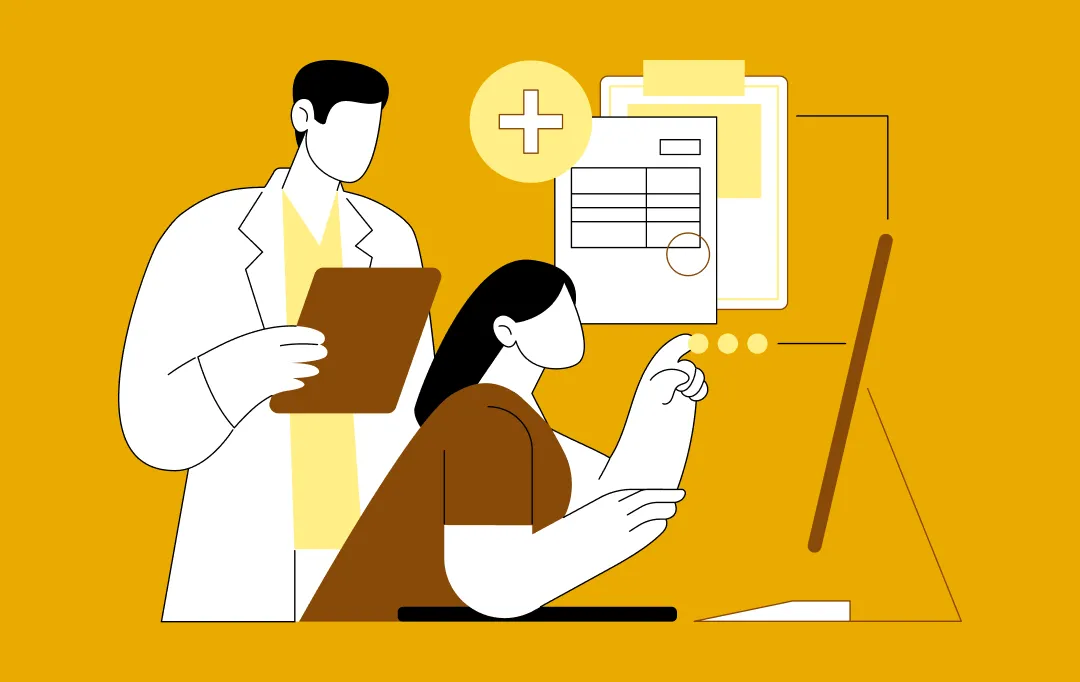
How Much Does It Cost to Build a Healthcare App in Saudi Arabia? All You Need to Know
Key takeaways: Healthcare app costs in Saudi Arabia range from 112,500 SAR to 2,250,000+ SAR based on size and complexity. The type of app you build matters more to cost than anything else. Compliance, security, and scalability are built into the cost, not add-ons. Development and testing consume the largest share of the budget. Hidden…
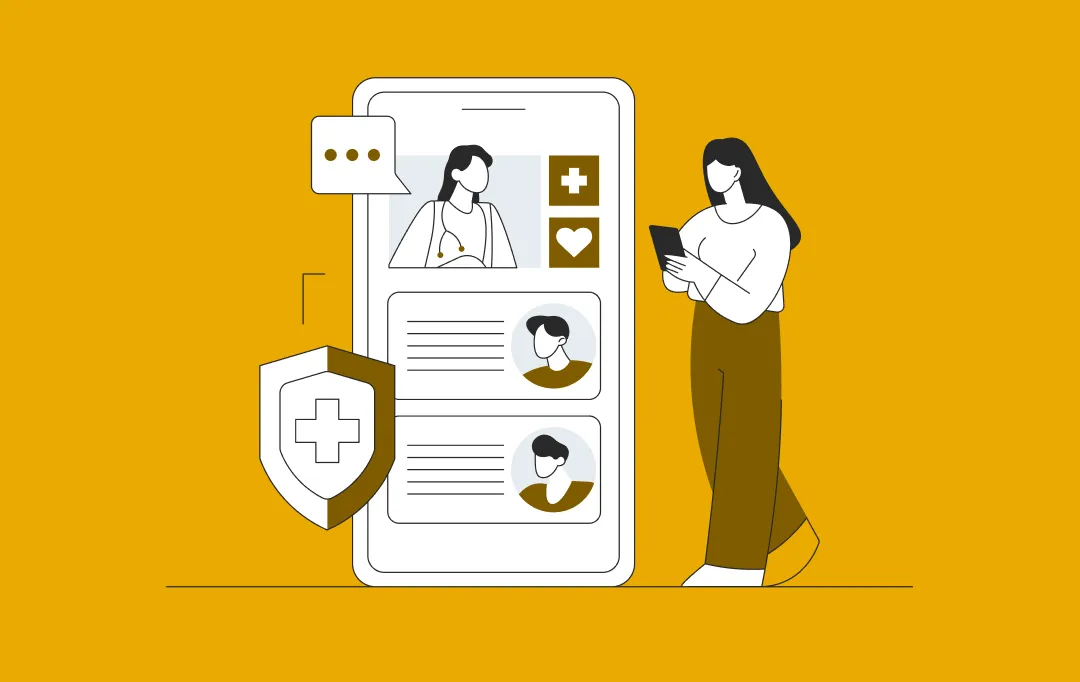
How Prescriptive Analytics Is Shaping the Future of Healthcare Management
A healthcare business doesn’t fall behind because its teams lack skill. It falls behind when decisions take too long. Bed allocation runs on yesterday’s data. Procurement reacts only when shortages hit. Care managers step in after a patient is already at risk. And leadership gets a picture of what’s happening only after the quarter closes,…
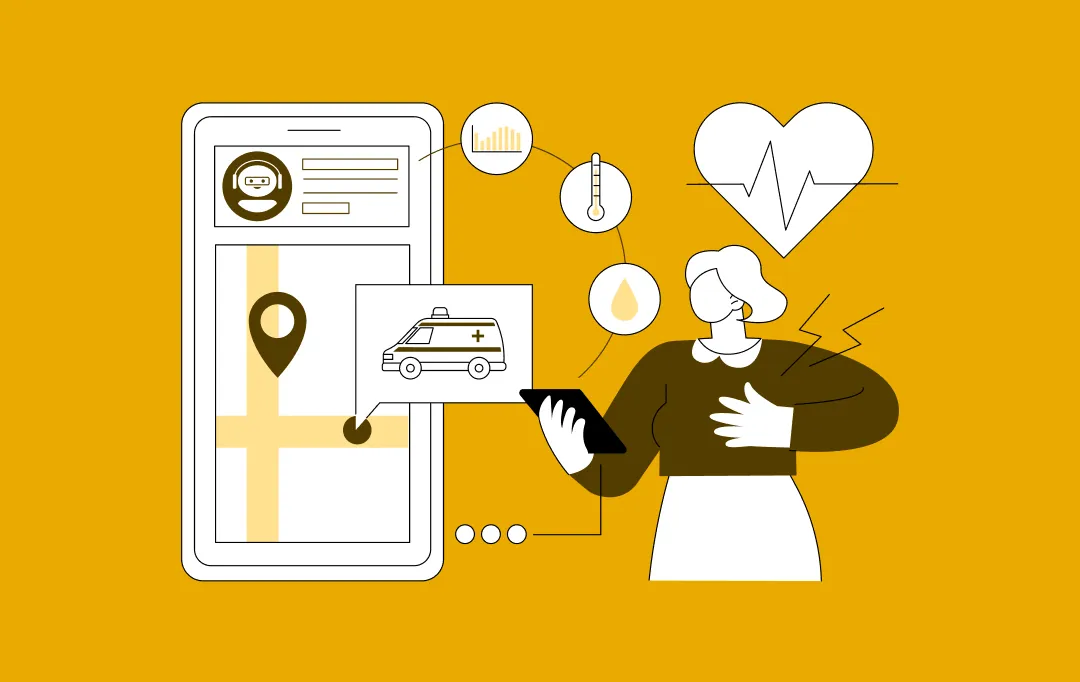
How to Build an Urgent Care App? A Step-by-Step Process, Features and Costs
Key takeaways: With more people turning to digital healthcare, the urgent care app market is expected to touch $3.1 billion by 2024 and continue growing fast through 2030. Apps that offer easy scheduling, video consultations, EHR access, and quick insurance handling tend to attract more users and keep them coming back. Developing an urgent care…
